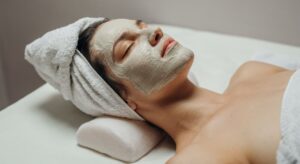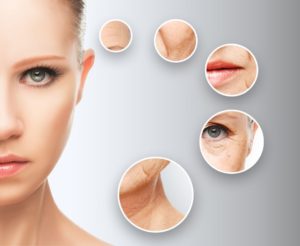Some of the most popular anti-aging treatments performed during cosmetic surgery include fillers, injections, and facial lifts. Although each can help you look younger and eliminate signs of aging, each has a different purpose and focuses on the unique elements of aging. As we age, the body loses collagen and fat in the cheeks, lips, temples, and forehead, leading to facial wrinkles and sagging skin, as well as cavities under the cheeks and eyes. Aging can also help you determine the proper facial treatment for you according to your beauty goals. The early stages of facial aging have not yet required surgery.
Botox or face fillers
Injections like Botox are used to relax the facial muscles that cause crow’s feet and eyebrow wrinkles, leaving you feeling refreshed and rested. The injection is relatively painless and does not require any downtime. The effect usually lasts for 36 months before it needs to be touched up.
Dermal Filler
Dermal fillers are used to increase volume and add a rounder contour to the face. By smoothing the fine lines, wrinkles and wrinkles on your face, you look younger. The most commonly used for correction are laugh lines or wrinkles from nose to mouth; gaps under the eyes; cheeks, temples and facial contours; lips and lips with jagged edges on vertical lines, acne scars.
Plastic surgery
Plastic surgery will work when the need for gravity is not eliminated, and the aging process can no longer be corrected with dermal fillers, injections or scrubs. If you have additional signs of aging and need a more significant facial lift, then a facial lift is your best choice. Facial lifts are ideal for the following problem areas: sagging skin or double chin around the neck excess fat around the nose and mouth cheeks or chin.
During the facial lift, the face is surgically improved to achieve the desired aesthetic goals. Remove excess skin from the face or neck area and move the tissue through a small incision with minimal visibility to tighten and smooth the facial area. Common surgeries associated with a facelift include forehead lift or eyelid surgery. Plastic facelifts are usually performed under general anesthesia, and you will usually be discharged from the hospital on the same day. Bandages are used for the first few days, and stitches are usually removed next week. You may bruise or swell quickly, which will disappear after a few days.
Pros And Cons Of Surgical And Nonsurgical Facelift
Surgical Facial lift – PROS
- Tighten the facial muscles: With age, the basic structure of the face will become weak and loose. Before repairing any sagging skin, your plastic surgeon will reconfigure this underlying structure.
- They repair sagging skin: your plastic surgeon will trim and tighten sagging skin to make the appearance more youthful and natural. However, your surgeon will make sure that your skin is not too tight, as this can improve facial contours.
- Double chin: Get rid of the double chin and straighten the neck area. The effect lasts for many years and is becoming more and more accessible.
- Effects: the effect of cosmetic surgery can last up to ten years. In addition, it is an affordable operation that minimizes pain and discomfort. In addition, a limited recovery time is required after executing this procedure.
Surgical Facial lift – CONS
- Recovery time: With today’s modern facial lifts, the recovery time has been dramatically reduced, but recovery still takes some time.
- Cost: Although cosmetic surgery has become cheaper and cheaper, some treatments are more expensive than nonsurgical treatments.
- Operational risk: As with any surgery, there are certain risks. -A qualified plastic surgeon who knows how to minimize these risks.
Nonsurgical facial lift – PROS
- No severe Pain: With a nonsurgical facelift, the patient will experience minimal discomfort and pain throughout the process.
- The procedure time is short: a non-surgical facelift does not require anesthesia or other medication to complete these procedures in an hour. The patient is different, and therefore the duration of treatment can vary for each patient.
- Naturally rejuvenated look: a non-surgical facelift does not cut or tighten the skin. Still, it is generally plump and plump, which gives facial features and skin minimal recovery time – with nonsurgical facelifts, the patient takes time is kept away from work or other necessary activities and duties.
- Fewer risks: Even if a surgical facelift is performed with the most excellent care, infections and complications from the anesthesia can arise. A nonsurgical facelift avoids all of these risks.
Nonsurgical facial lift – CONS
Nonsurgical facial lifts have many advantages, but they also have certain disadvantages. Regular corrections are required to maintain the results obtained.
- Additional costs: although nonsurgical cosmetic procedures are relatively cheap, the results can last from 6 months to a year.
- Additional touch-up is required: which may make nonsurgical facial lifts as expensive or more expensive as traditional long-term surgical facial lifts.
*Information in this article is not medical advice and may not be factually accurate. It is intended for entertainment purposes only. Consult with a physician before attempting any tips in this blog post and to get the most up to date factual data about any procedure or treatment.














